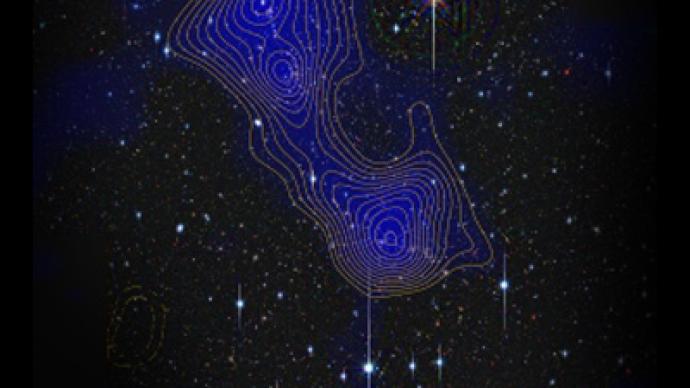Dark matter space superstructures observed for first time

Scientists have for the first time directly observed dark matter, which forms the greatest part of a galactic filament, the largest-known structure in the universe.
On the largest scale the universe looks like an intricate web. Clusters of galaxies, which form its strands, are connected by much slimmer bridges, or filaments, with huge voids in between.The shape of these structures is determined by distribution of dark matter, which cannot absorb or emit electromagnetic radiation and thus cannot be seen in a conventional way. But dark matter is estimated to be almost five times as common in the universe as regular matter, and its gravitational pull has clumped galaxies into what they are today.Detecting dark matter is possible thanks to gravitational lensing – the bending of light from distant galaxies as it travels through and next to it due to the wrap of space caused by gravity. That is relatively simple to do with the dark matter in the nodes of the space web, but the filaments are too narrow cosmically speaking.Now an international team of astrophysicists has discovered a dark matter filament, which stretches in a very convenient way for observation. It connects the galaxy clusters Abell 222 and Abell 223. The filament is oriented in a way that most of its mass lies along the line of sight to earth. So the lensing effect it produces on the light we can observe is greatly enhanced, the group reported online on Wednesday in the Nature journal. It is still too weak to be seen by eye, but could be determined statistically."The standard wisdom is that the gravitational lensing of filaments is too weak to be detected with current telescopes," Jörg Dietrich, a cosmologist at the University Observatory Munich in Germanyt who co-authored the study, told space.com. "Only when we realized this system has such a peculiar geometry did we realize we have a chance."The scientists studied distortion of more than 40,000 background galaxies and calculated the mass and shape of the filament, a feat no astronomers had previously managed to pull off.Researchers used data from the Subaru telescope on Mauna Kea in Hawaii and the XMM-Newton space telescope. They also used a model to subtract out the masses of the galaxy clusters. The remaining mass is attributed to the filament.














